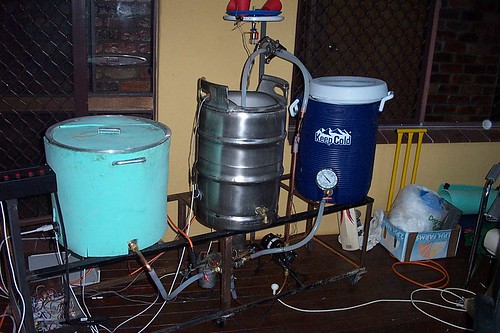Hogan
Stalag Brewery
- Joined
- 3/8/05
- Messages
- 772
- Reaction score
- 2
I've seen a number of 'arms' that are used in the recirculation of mash to clear it prior to mashing out or sparging. They seem to be mostly manifolds that redistribute the runnings across the top of the mash until they are seen to be clear, the recirculation stopped and the run-off commenced.
Are these arms really necessary for recirculating?
Could not the top inlet for the recirculation be mounted below the high mash level and the runnings pumped back into the mash without the need for 'arms'. The pressure of the March Pump should stop any flow-back and the fact that the recirculation is going in below mash level should alleviate HSA. Obviously the top inlet would require a ball value which would be turned off with the cessation of pumping.
A top inlet mounted at a level below the lowest predicted mash level would also remove the necessity for 'adjustable heights' for recirculation arms.
This is not meant to apply to fly sparging.
Have I got this recirculation business all wrong or what??
Cheers, Hoges.
Are these arms really necessary for recirculating?
Could not the top inlet for the recirculation be mounted below the high mash level and the runnings pumped back into the mash without the need for 'arms'. The pressure of the March Pump should stop any flow-back and the fact that the recirculation is going in below mash level should alleviate HSA. Obviously the top inlet would require a ball value which would be turned off with the cessation of pumping.
A top inlet mounted at a level below the lowest predicted mash level would also remove the necessity for 'adjustable heights' for recirculation arms.
This is not meant to apply to fly sparging.
Have I got this recirculation business all wrong or what??
Cheers, Hoges.






